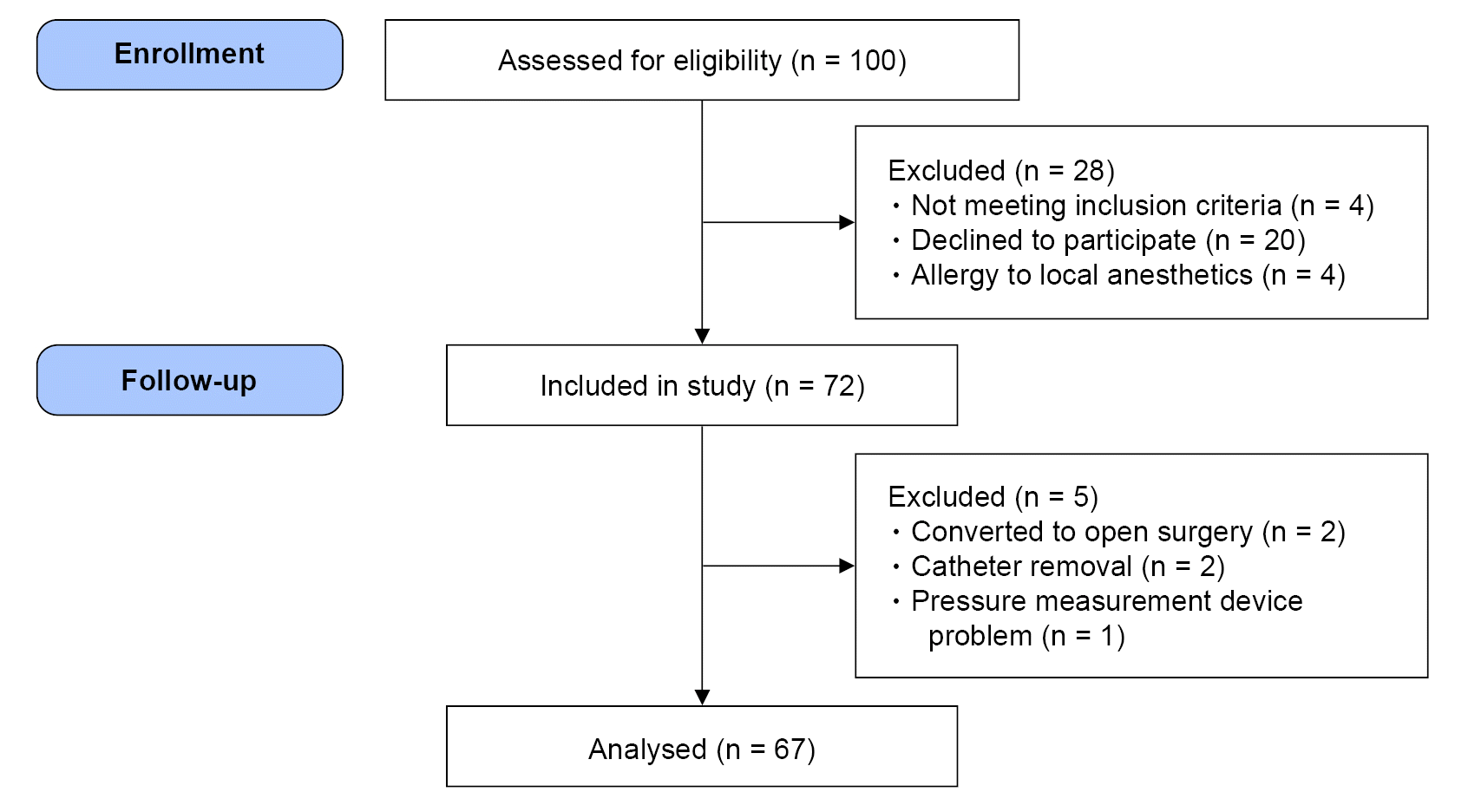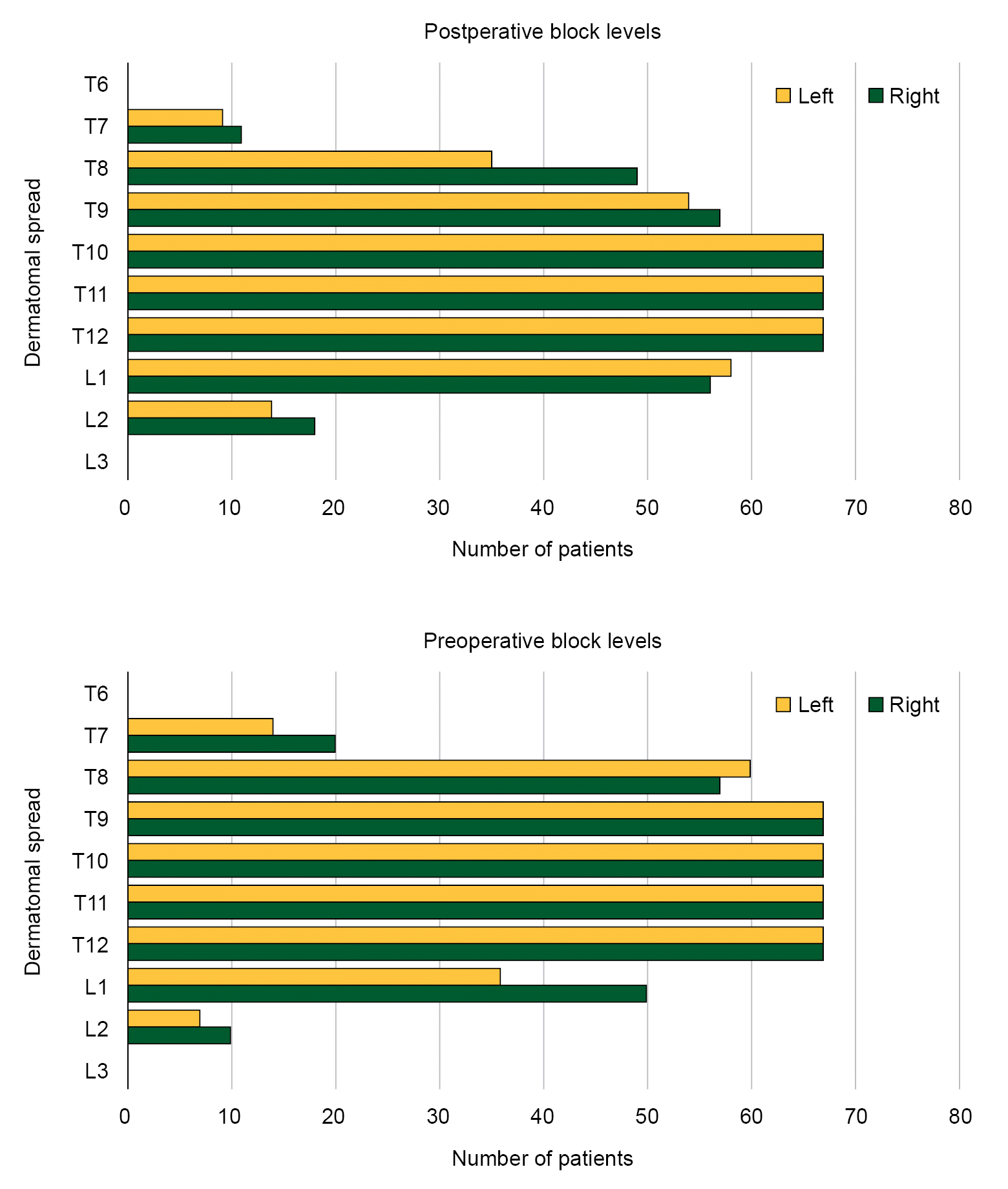1. Machi A, Joshi GP. Interfascial plane blocks. Best Pract Res Clin Anaesthesiol. 2019; 33:303–15.

2. Elsharkawy H, El-Boghdadly K, Barrington M. Quadratus lumborum block: anatomical concepts, mechanisms and techniques. Anesthesiology. 2019; 130:322–35.
3. Uppal V, Retter S, Kehoe E, McKeen DM. Quadratus lumborum block for postoperative analgesia: a systematic review and meta-analysis. Can J Anaesth. 2020; 67:1557–75.

4. Blanco R. The mechanism of the quadratus lumborum block: A peripheral sympathetic field block? Br J Anaesth. 2016; 117:EL_13593.

5. Willard FH, Vleeming A, Schuenke MD, Danneels L, Schleip R. The thoracolumbar fascia: anatomy, function and clinical considerations. J Anat. 2012; 221:507–36.

6. Børglum J, Moriggl B, Jensen K, Lønnqvist PA, Christensen AF, Sauter A, et al. Ultrasound-guided transmuscular quadratus lumborum blockade. Br J Anaesth. 2013; 111:EL_9919.

7. Faul F, Erdfelder E, Buchner A, Lang AG. Statistical power analyses using G*Power 3.1: tests for correlation and regression analyses. Behav Res Methods. 2007; 41:1149–60.

8. Chin KJ, Lirk P, Hollmann MW, Schwarz SKW. Mechanisms of action of fascial plane blocks: a narrative review. Reg Anesth Pain Med. 2021; 46:618–28.

9. Vamnes JS, Sörenstua M, Solbakk KI, Sterud B, Leonardsen AL. Evaluation of quadratus lumborum block after laparoscopic cholecystectomy. Reg Anesth Pain Med ESRA19-0268. 2019; 44:A123.
10. Ökmen K, Metin Ökmen B, Topal S. Ultrasound-guided posterior quadratus lumborum block for postoperative pain after laparoscopic cholecystectomy: A randomized controlled double blind study. J Clin Anesth. 2018; 49:112–7.

11. Zhu M, Qi Y, He H, Lou J, Pei Q, Mei Y. Analgesic effect of the ultrasound-guided subcos-tal approach to transmuscular quadratus lumborum block in patients undergoing laparoscopic nephrectomy: a randomized controlled trial. BMC Anesthesiol. 2019; 19:154.

12. Rahendra R, Pryambodho P, Aditianingsih D, Sukmono RB, Tantri A, Melati AC. Comparison of IL-6 and CRP concentration between quadratus lumborum and epidural blockade among living kidney donors: a randomized controlled trial. Anesth Pain Med. 2019; 9:e91527.

13. Carline L, McLeod GA, Lamb C. A cadaver study comparing spread of dye and nerve involvement after three different quadratus lumborum blocks. Br J Anaesth. 2016; 117:387–94.

14. Adhikary SD, El-Boghdadly K, Nasralah Z, Sarwani N, Nixon AM, Chin KJ. A radiologic and anatomic assessment of injectate spread following transmuscular quadratus lumborum block in cadavers. Anaesthesia. 2017; 72:73–9.

15. Dam M, Moriggl B, Hansen CK, Hoermann R, Bendtsen TF, Børglum J. The pathway of injectate spread with the transmuscular quadratus lumborum block: a cadaver study. Anesth Analg. 2017; 125:303–12.

16. Elsharkawy H. Quadratus lumborum block with paramedian sagittal oblique (subcostal) approach. Anaesthesia. 2016; 71:241–2.

17. Sondekoppam RV, Ip V, Johnston DF, Uppal V, Johnson M, Ganapathy S, et al. Ultrasound-guided lateral-medial transmuscular quadratus lumborum block for analgesia fol-lowing anterior iliac crest bone graft harvesting: a clinical and anatomical study. Can J Anaesth. 2018; 65:178–87.

18. Diwan S, Kulkarni M, Kulkarni N, Nair A. A radiological inquest to determine the destiny of ultrasound guided trans-muscular quadratus lumborum plane catheters. Indian J Anaesth. 2019; 63:667–70.

19. Hodges PW, Eriksson AM, Shirley D, Gandevia SC. Intra-abdominal pressure increases stiffness of the lumbar spine. J Biomech. 2005; 38:1873–80.
20. El-Monajjed K, Driscoll M. A finite element analysis of the intra-abdominal pressure and paraspinal muscle compartment pressure interaction through the thoracolumbar fascia. Com-put Methods Biomech Biomed Engin. 2020; 23:585–96.

21. Chen YH, Chai HM, Shau YW, Wang CL, Wang SF. Increased sliding of transverse abdo-minis during contraction after myofascial release in patients with chronic low back pain. Man Ther. 2016; 23:69–75.
22. Ranger TA, Teichtahl AJ, Cicuttini FM, Wang Y, Wluka AE, OʼSullivan R, et al. Shorter lumbar paraspinal fascia is associated with high intensity low back pain and disability. Spine. 2016; 41:E489–93.




 PDF
PDF Citation
Citation Print
Print







 XML Download
XML Download